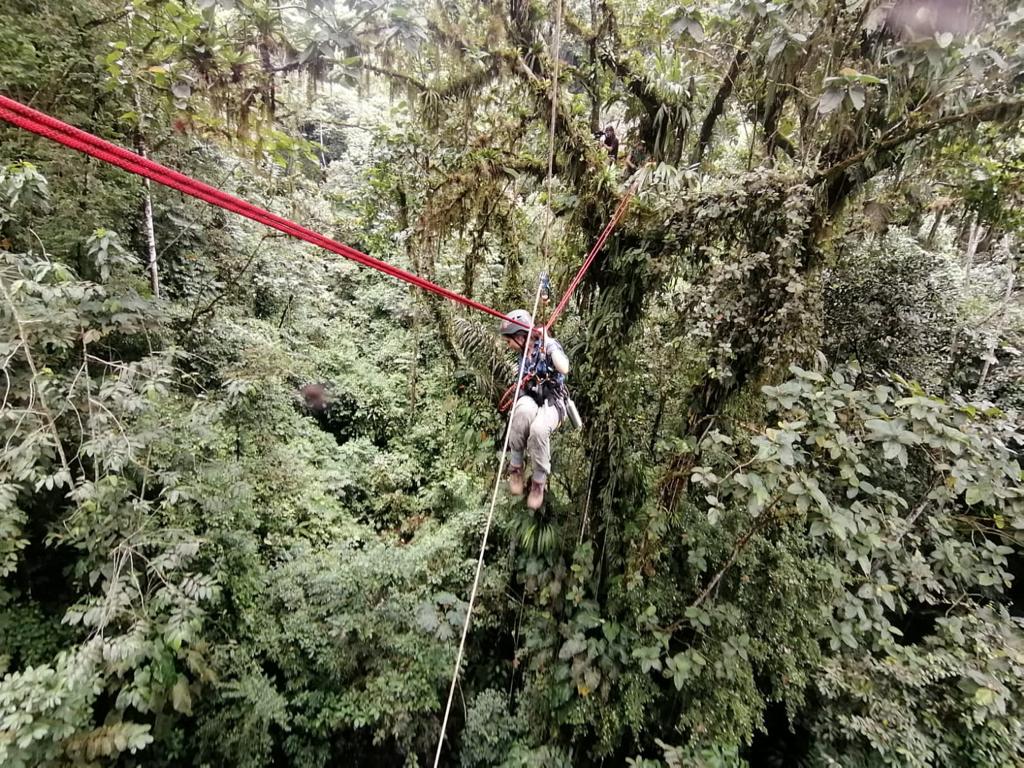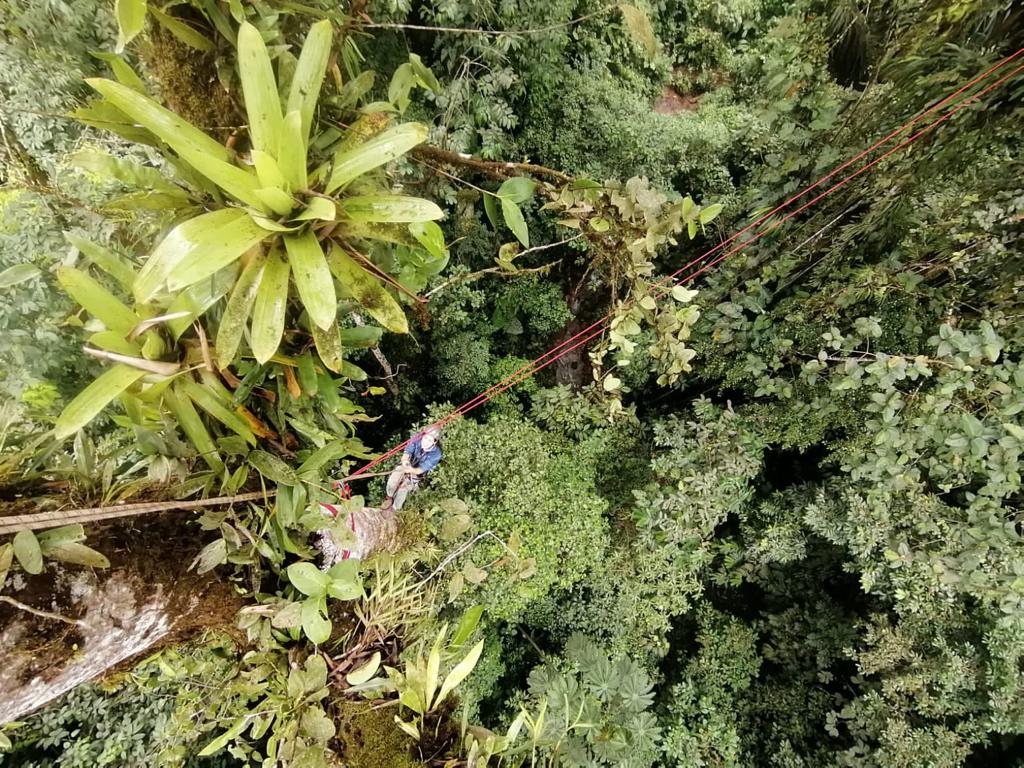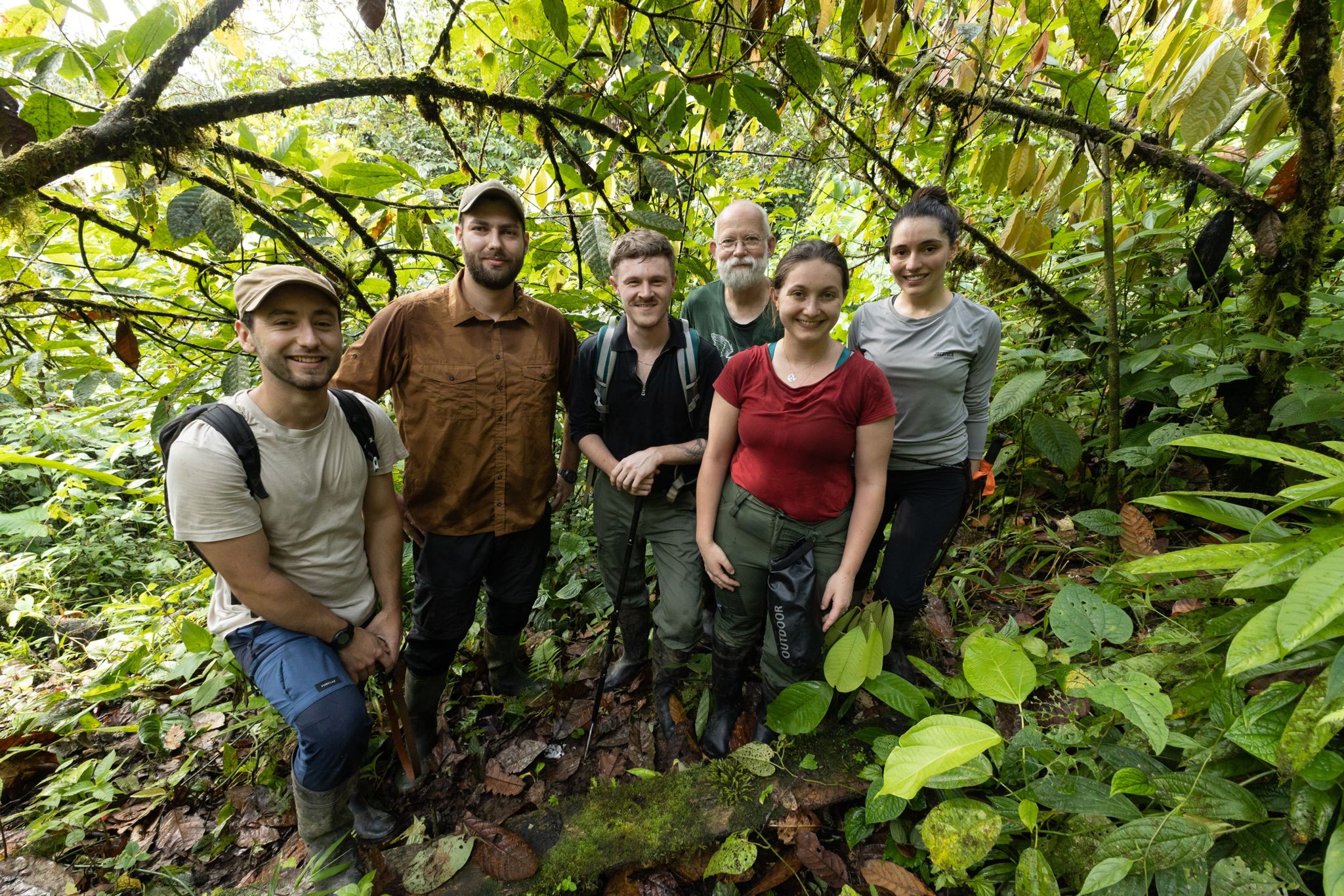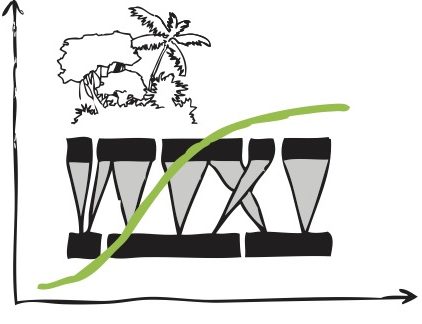The diversity of life histories among amphibians and reptiles is astonishing. While some thrive and feed on fish in streams, others choose to conceal themselves in the hollows of tree canopies. In 2023, Reassembly’s herpetological team undertook several side projects. During their visit to Canandé, a team from MO Rödel’s lab observed nine snake predation events, contributing to understanding the feeding biology of colubrids, boas, and vipers. Four colubrids and one viper feed on different species of frogs; an eyelash boa fed on a fish, a colubrid consumed a reptile egg, and a Rainbow Galliwaspthey was attacked by a colubrid. Lastly, a boa was observed constricting and eating a Honeycreeper.
Also, while acquiring monitoring techniques in the canopy, Karla collaborated with a herpetologist who visited Canandé intending to explore the herpetofauna of tree canopies using advanced rope-access methods. With the support of various professional climbers, Oliver Thomas led an exploratory study, during which four anoles, two frogs, and a gecko were observed at heights. Individuals were found on epiphytic plants within the canopy, while some chose the main branches of trees or cavities. In the context of species-rich tropical ecosystems, each observation is considered a valuable contribution to better understanding species’ natural history, their trophic roles, and the status of their populations, from the ground to the treetops.
Griesbaum F, Lindner T, Bock S, Ernst M, Neira-Salamea K, Moreira V, Erazo S, Penner J, Rödel MO (2023) Nine predation events by snakes from the Chocó rainforest of Ecuador. Herpetology Notes 16: 749-756
Thomas O, Preston S, Cole T, McDonald RV, Castellano I, Neira-Salamea K (2023) Records of seven species utilizing the upper canopy in Northwestern Ecuador. Reptiles & Amphibians 30: e19692




